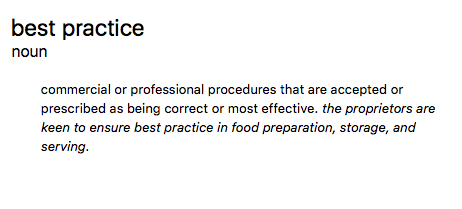How to succeed as a HR leader: forget ‘best practices’

The HR industry has more buzzwordy ‘best practices’ than most. But they’re counter-productive. By definition, accepted or ‘standard’ approaches don’t achieve the best results, especially when it comes to finding, hiring and keeping the best employees.
 ‘Best practices’ are like fad diets. If you’re an Atkins enthusiast, Atkins is your hammer and the world is a carb-shaped nail. Companies, like dieters, have individual needs, goals and lifestyles. They don’t need ‘standard’ solutions. They need tailored ones.
‘Best practices’ are like fad diets. If you’re an Atkins enthusiast, Atkins is your hammer and the world is a carb-shaped nail. Companies, like dieters, have individual needs, goals and lifestyles. They don’t need ‘standard’ solutions. They need tailored ones.
Su Joun, the former VP of Talent, Inclusion and Diversity of the health insurer, Blue Cross Blue Shield of Massachusetts (BCBSMA), advises new HR leaders to abandon general ‘best practices’ for a more tailored approach:
Learn your organization first. Lead it later.
Here’s how she advises HR leaders to approach a new job and learn what their organization needs.
Look beyond HR
According to Su, HR teams are often incredibly disconnected from their businesses areas and divisions. And that’s how they fail. It’s natural for VPs of Talent to think that the HR team they’ve inherited already know their organization well. But they may not. HR employees tend to just know the same 20 to 50 people in their organization and assume that they know everything because of that.
There’s a danger of getting a year or so into a HR role, looking up and realizing, “I never actually spoke to people in the organization about what they wanted and needed. There are just a few people I talk to all the time and I have no idea what the other people are thinking.” That’s how mistakes happen. That’s how a program gets launched that nobody uses. And that’s why people say “The new VP of Talent doesn’t know what’s really going on.”
Su acknowledges that it’s difficult to step back and get to know an organization, especially during the first few months in a new job. But, in a VP of Talent, or other HR leadership role, you need to be the person who meets more employees than anyone else. Otherwise you won’t be able to understand their needs or build the correct programs.
- Interviewing candidates for leadership roles? Visit our leadership interview questions.
Listen to as many people as possible
“Nothing beats talking and listening to people,” says Su. She advises new HR leaders to build relationships all over their organization. When it comes to relationships, there are no shortcuts. In the beginning, it’s easiest to start with a sampling approach. Meet at least 3 people who work at different levels in each department:
- Meet department heads
- Then meet people in middle management
- And then meet a ‘ground troop’ worker.
See if they’re saying similar things. Even with a sample size of three, you’ll be able to get a feel for how people are working together. Go to team meetings to understand what some of the topics are. The more meetings you attend and people you meet, the better.
When Su first joined the HR team at BCBSMA, she made a commitment to meet 300 new associates a year. By the time she left, she had met around 1,100.
Building relationships doesn’t have to involve lunch meetings or drink dates. It means listening. There’s something incredibly powerful about just listening to what it is that they’re going through, good or bad.
When it comes to seeding change, it’s easy to be the first person to voice an idea. But it’s hard to convince people to follow. If you don’t listen to people first, they’ll be unlikely to follow you—even if you try to convince them by talking about ‘best practices.’
This post is the first of a series of posts focusing on how newly-minted VPs of Talent, and other HR leaders, can succeed in a new role.




